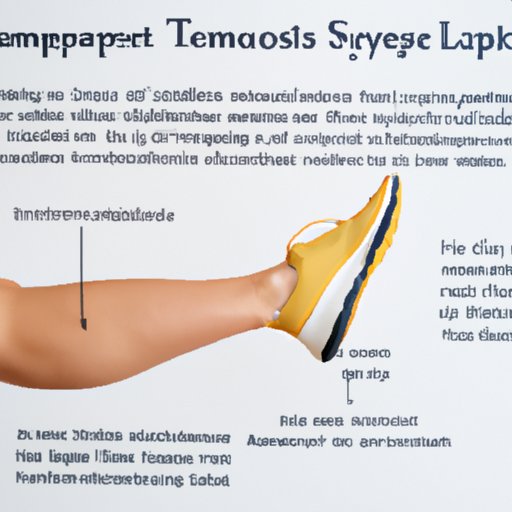Introduction
Superficial thrombophlebitis is a condition in which a blood clot forms in the veins just below the surface of the skin. It is often caused by an injury to the vein or prolonged periods of standing or sitting. While the condition can cause pain and inflammation, it is usually not serious and can be treated with anti-inflammatory medications and warm compresses. But can you exercise with superficial thrombophlebitis?
How to Exercise Safely With Superficial Thrombophlebitis
Exercising with superficial thrombophlebitis can be beneficial and safe when done properly. However, there are certain precautions that should be taken to ensure that the activity does not aggravate the condition. Here are some tips for avoiding injury:
- Wear supportive shoes and clothing that won’t irritate the affected area.
- Avoid activities that involve repetitive motions or sudden movements.
- Take frequent breaks during exercise.
- Start slowly and gradually increase intensity.
- Listen to your body and stop if you experience any pain or discomfort.
It is important to understand the risks associated with exercising with superficial thrombophlebitis. The most common risk is that the blood clot may become dislodged and travel to other parts of the body. This could potentially lead to a more serious condition called deep vein thrombosis (DVT). Other risks include further irritation of the affected area, swelling, pain, and inflammation.
There are also certain exercise techniques that are more appropriate for people with superficial thrombophlebitis. Low-impact activities such as walking, swimming, and cycling are recommended as they will not strain the affected area. Stretching exercises can also help to reduce pain and improve flexibility. Yoga and tai chi are good choices for those looking for a gentle form of exercise.

Examining the Impact of Exercise on Superficial Thrombophlebitis
Regular exercise can have a positive impact on superficial thrombophlebitis. Exercise can help reduce pain and inflammation, improve circulation, and strengthen the muscles in the affected area. Regular physical activity can also help to reduce the risk of DVT. In addition, exercise can help to reduce stress and improve overall health.
However, there are potential drawbacks of exercising with superficial thrombophlebitis. Over-exerting yourself can make the condition worse. It is also important to be aware of the signs of DVT and seek medical attention if symptoms worsen. Additionally, vigorous exercise can increase the risk of bleeding or infection.
Conclusion
Exercising with superficial thrombophlebitis can be beneficial and safe when done properly. It is important to wear the correct clothing, take frequent breaks, and start slowly. Regular physical activity can help to reduce pain and inflammation, improve circulation, and strengthen the muscles in the affected area. However, it is important to be aware of the risks of exercising with this condition, as well as the signs of DVT.
In conclusion, exercising with superficial thrombophlebitis can be beneficial when done safely and under the guidance of a doctor. It is important to be aware of the risks and to listen to your body for signs of pain or discomfort. With proper precautions, exercise can be an effective way to manage the symptoms of this condition.
(Note: Is this article not meeting your expectations? Do you have knowledge or insights to share? Unlock new opportunities and expand your reach by joining our authors team. Click Registration to join us and share your expertise with our readers.)
